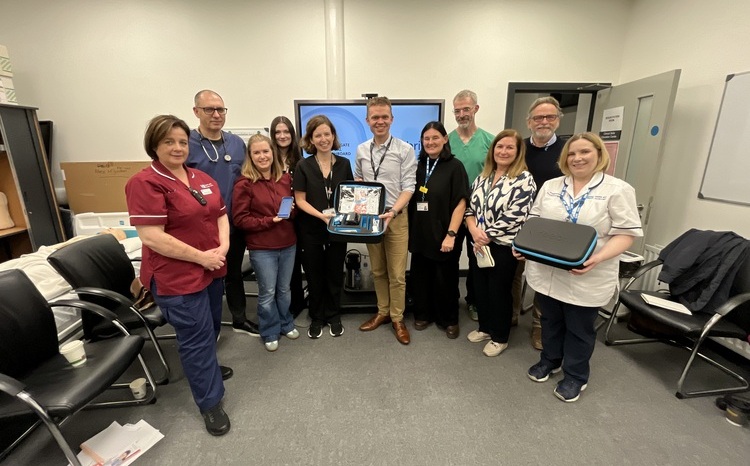We live in digital times
- 8 July 2008
Information is the lifeblood of medicine. But it is also critical to the rest of healthcare – organising records, counting patients, sending bills, paying staff, working out how to separate the cost-effective from the ineffective or marginally effective when it comes to treatments.
As Aneurin Bevan presciently remarked at the foundation of the NHS “administration will be the biggest headache for years to come.”
The arrival of big mainframes in the 1960s started to bring IT to bear on administration. By the 1980s, the PC was becoming a tool that general practitioners could use. Hospital doctors also acquired PCs for all sorts of audit and medical study purposes. The clear possibility of an electronic patient record was there.
Yet there were problems with standardisation and interoperability – not just in the UK, but everywhere else. Lots of small software manufacturers were delivering bespoke systems, none of which would talk to each other and many of which could not be plugged into hospital patient administration systems. No supplier ever acquired a large enough base of hospitals to build a viable and lasting business.
The long shadow cast by Wessex
When attempts were made to do something on a large scale – most famously and most disastrously in Wessex – the scale and cost of failure produced some of the most hostile and searing hearings the Public Accounts Committee has ever held. IT was something about which many hospital managers became very, very wary.
But by the early 1990s, the NHS had begun to realise that it should, in theory, have key advantages over health systems in many other countries. Being a single, national system, it could, in theory, standardise.
Thus in 1992 the NHS launched its first information strategy, which introduced the NHS number, the first NHS-wide network and the definition of some minimum data sets, alongside the continued but costly development of the absolute key to getting a useful clinical record, the Read codes (which have since evolved into SNOMED).
Direction but no money
This set a clear direction of travel. But there was not much money to make things happen. Indeed, over the succeeding years, the bigger IT players such as ICL, Andersen and Digital quit the UK market in despair, leaving their losses behind them.
Meanwhile, the 1992 IT strategy brought with it the first of the rows that still plagues healthcare IT across the world – the debate about patient confidentiality and data security that generates honestly held but passionately different views among its participants.
When Labour came to power in 1997, it tried again. In 1998, it launched an ambitious seven-year plan – costed at an unbelievably low £1 billion – aimed at making patient records electronic by 2005.
The problem with ring fencing
This time there was some money – but what happened to it was crucial to later developments. The money was first “earmarked” and then “ring fenced” – but it still disappeared, spent on other things.
The NHS has a long history of doing that. Back in the 1980s, for example, its14 regional health authorities were given ring fenced cash to build regional secure centres for patients who were otherwise stuck in Broadmoor. Just one of the 14 centres eventually got built.
No wonder then that the current National Programme for IT in the NHS was set up to be delivered nationally. Those who argue that it would have worked better if national standards been set, some suppliers approved, and the NHS given earmarked cash to choose between them, may have logic on their side.
But it is a logic the NHS knows how to defeat. Those making the case in 2002, when NPfIT was launched, had NHS history – and the Department of Health’s long memory of what had happened to earmarked cash in the past – against them.
NPfIT poised on knife edge
Which brings us to today: with the national programme balanced on a knife edge between success and failure. Fujitsu has just departed as Local Service Provider for the South, and the uncertainty of just how it is going to be replaced hangs over the programme.
The work going on in northern hospitals, starting at Morecambe Bay, to get iSoft’s Lorenzo in place is also critical. A resolution in the south, success in the north, plus a steady string of successful acute deployments by BT in London, and the programme will have cracked it. Late. Very late. But still, it will be getting there. Failure on any count will put its future in jeopardy.
And the future remains highly IT dependant. Great chunks of the Darzi review rely on IT – not least the systematic measurement of clinical outcomes and of patient reported outcomes and satisfaction ratings, which are to be used as compare and contrast means of driving up quality.
Ambitious goals to use those measures to pay for quality then depend on the electronic patient record finally becoming a reality. As does the re-promise in this week’s primary and community care strategy that HealthSpace will give patients access to their own records and tests. Not to mention on-line registration with GPs via NHS Choices, and on-line booking of GPs’ appointments.
Such stuff is crucial if the NHS is evolve at 60 into a higher quality system that offers patients an experience closer to the service they receive in much of the rest of their lives. It is the lifeblood of modern medicine: too important to be allowed to fail.
A version of this column first appeared on the Microsoft NHS Resource Centre: www.microsoft.com/uk/nhs




